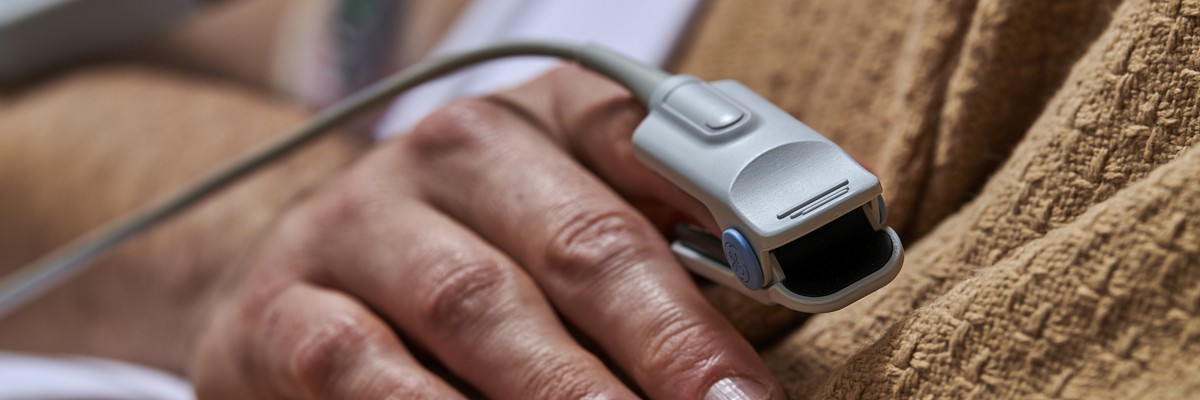Pulse oximetry has many different applications across various care areas of medical decision-making. Some of the most common conditions that require pulse oximetry are asthma, chronic obstructive pulmonary disease (COPD), pneumonia, lung cancer, heart failure, and more. Recently, pulse oximetry has also been used to monitor COVID-19 symptoms. The first oximeter, a noninvasive tool for monitoring a person's oxygen saturation, was developed in the 1940s. However, it took more than eighty years to come to light that the SpO2 sensor (the oximeter of today) is not effective on darker skin. Previous studies1,2 show that the majority of testing for oximetry reading accuracy was conducted with light-skinned individuals. Most pulse oximeters were likely calibrated using these lighter skin tones, carrying the assumption that skin pigment would not affect results. However, it is now clear that skin tone is a meaningful consideration.
A Timely Discovery
According to a December 2020 letter to the editor published in the New England Journal of Medicine (NEJM), when studied in two large cohorts, Black patients had nearly three times the frequency of undetected occult hypoxemia as white patients. The implication of these findings, especially in light of the COVID-19 pandemic, is that relying on pulse oximetry to triage patients could place Black patients at an increased risk for hypoxemia. After investigating the findings published in the NEJM, the FDA issued a safety communication in February 2021 stating that if an FDA-cleared pulse oximeter reads 90%, then the true oxygen saturation in the blood is generally between 86%–94%. This response cited the NEJM letter and emphasized the need for further evaluation and understanding of the association between skin pigmentation and oximeter accuracy.
GE’s SpO2 Pulse Oximetry: Tested for Accuracy
To determine the accuracy of its pulse oximetry across various skin tones, GE Healthcare's SpO<> technology was tested on normal, healthy subjects with skin tones ranging from light to dark. It was checked under three different conditions:
- Normal conditions, using eleven subjects
- Motion and nonmotion conditions, using ten subjects
- Low-perfusion conditions (decreased arterial blood flow to the extremities), using ten subjects
Oxygen saturation values were collected simultaneously via blood draws from indwelling catheters in the left radial artery of each subject. Blood was immediately analyzed by CO-oximeters to determine arterial oxygen saturation.
The accuracy requirements set by the ISO 9919 require a score lower than 4.0—GE’s SpO2 sensor exceeded this under all conditions.
- Normal conditions: 261 data points were collected in the oxygen saturation range of 70%–100% with an accuracy of 1.4.
- Motion conditions: 543 data points were collected in the oxygen saturation range of 70%–100% with an accuracy of 1.9.
- Nonmotion conditions: 324 data points were collected in the oxygen saturation range of 70%–100% with an accuracy of 1.7.
- Low-perfusion conditions: Data points were collected in the oxygen range of 70%–100% for three perfusion levels:
- Ultra-low to normal perfusion with an accuracy of 1.9
- Ultra-low to impaired perfusion with an accuracy of 2.5
- Ultra-low to low perfusion with an accuracy of 2.7
Implications for Patients Experience Low Blood Oxygen
Pulse oximeter accuracy is critical across skin tones and under all conditions. If a SpO2 sensor reports higher values than a patient is actually experiencing, it may incorrectly indicate that the patient does not need supplemental oxygen. Consistently inaccurate values—due to the sensor's inability to properly see the patient's blood because of skin pigmentation—could put the patient at risk for serious, long-term health issues. Correct readings are particularly important for patient populations that largely consist of people of color, as they may already face long-standing inequities and biases that affect their care. Not only that, but certain populations have higher incidences of conditions that require pulse oximetry testing. For example, Black and American Indian/Alaska Natives have the highest current asthma rates compared to other races and ethnicities, according to the American Lung Association. Indisputable pulse oximeter values make it impossible for clinicians to refuse treatment or ignore symptoms when a patient can only self-report.
Forward progress relies on upgrading technologies that seem to function fine—because, for patients, the difference can be a marked one. Asking questions, probing into accepted norms, and tinkering with tools that were developed in a different era can lay the foundation to better serve diverse patient populations. Eighty years is too long to go without adequate care.
References:
1. Bickler, Philip E., et al. "Effects of Skin Pigmentation on Pulse Oximeter Accuracy at Low Saturation." Anesthesiology, vol. 102, no. 4, 2005, pp. 715– 719., doi:10.1097/00000542-200504000-00004. Accessed June 6, 2021.
2. Feiner, John R., et al. "Dark Skin Decreases the Accuracy of Pulse Oximeters at Low Oxygen Saturation: The Effects of Oximeter Probe Type and Gender." Anesthesia & Analgesia, vol. 105, no. On Line Suppl., 2007, doi:10.1213/01.ane.0000285988.35174.d9. Accessed June 6, 2021.





